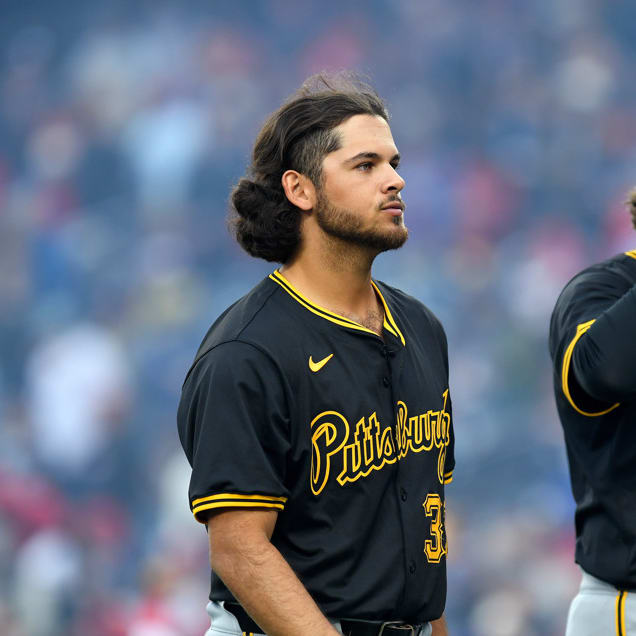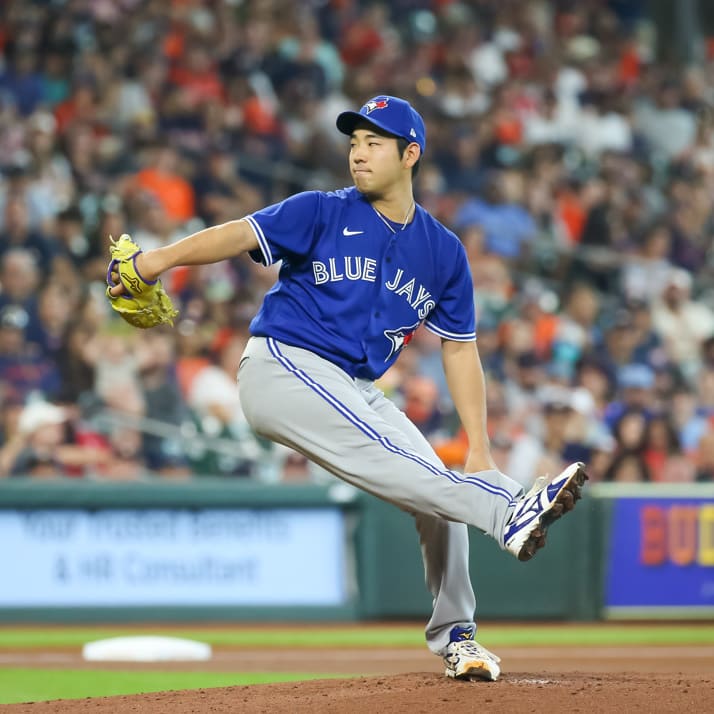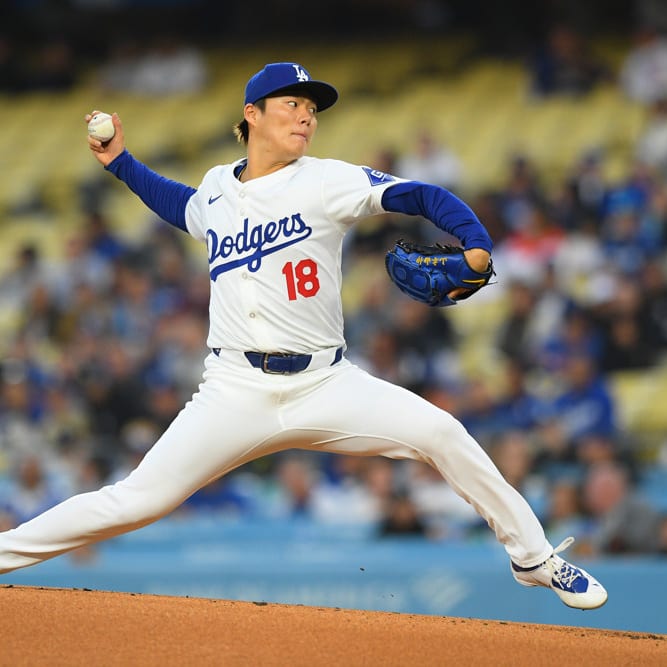This article is part of our The Saber's Edge series.
Entering 2014, quite a few people liked Phil Hughes as a buy-low candidate. In Yankee Stadium, he gave up 1.7 HR/9 and only 0.8 HR/9 on the road. He looked to just improve on the home run numbers alone. In 2014, his HR/9 did improve to 0.7, but the big reason for his great season was the drop in his walk rate from 2.6 BB/9 in 2013 to 0.7 BB/9 in 2014. Most of the rest of his stats were also career best since becoming a full-time starter in 2010 like a 1.13 WHIP and 3.52 ERA. While his strikeouts increased from 7.5 K/9 to 8.0 K/9, the main reason for the improvement was the drop in walks.
Finding a breakout or two like Phil Hughes can be huge for a fantasy owner. The two key stats people look for in breakouts are strikeouts
Entering 2014, quite a few people liked Phil Hughes as a buy-low candidate. In Yankee Stadium, he gave up 1.7 HR/9 and only 0.8 HR/9 on the road. He looked to just improve on the home run numbers alone. In 2014, his HR/9 did improve to 0.7, but the big reason for his great season was the drop in his walk rate from 2.6 BB/9 in 2013 to 0.7 BB/9 in 2014. Most of the rest of his stats were also career best since becoming a full-time starter in 2010 like a 1.13 WHIP and 3.52 ERA. While his strikeouts increased from 7.5 K/9 to 8.0 K/9, the main reason for the improvement was the drop in walks.
Finding a breakout or two like Phil Hughes can be huge for a fantasy owner. The two key stats people look for in breakouts are strikeouts and walks. Phil Hughes is an example of a pitcher getting his walks under control in 2014. Garrett Richards is an example of a pitcher cranking up the strikeouts (6.3 K/9 in 2013 to 8.8 K/9 in 2014). Or a pitcher can improve both like Jon Lester did last year with his K/9 going from 7.5 to 9.0 and his BB/9 from 2.8 to 2.0.
The following is a breakdown of how often pitchers improve their walk and strikeout numbers from one season to the next. I implored the following caveats.
Only starting pitchers in both seasons were used. When pitchers move from starter to reliever, they generally see their numbers improve. I didn't want to see these jumps. A .8 GS/G ratio was used for both season to make sure the pitcher was mainly used as a starter.
Pitchers from 2005 to current were examined. Also, I only looked at pitchers 29-years-old and younger. One hundred-and-twenty innings pitched was used as the minimum for season 1 and 30 IP for season 2. I dropped the minimum in the second season as pitchers who saw a decline in production may be demoted and not get the chance to reach 120 IP.
In all, 569 pitching seasons matched the following criteria. I will start with the data on walks.
| BB/9 CHANGE | PCT of PITCHERS | AVG BB/9 |
| > +2 | 1.4 | 3.1 |
| +1 to +2 | 9.0 | 2.8 |
| +0.5 to +1 | 16.0 | 2.6 |
| +0.5 to -0.5 | 50.1 | 2.8 |
| -0.5 to -1 | 15.1 | 3.3 |
| -1 to -2 | 8.3 | 3.9 |
| < -2 | 0.2 | 4.0 |
A couple of takeaways from the information. Only 8.5 percent of the pitchers see an improvement of an entire point of BB/9. Also, for the pitcher to see this improvement, he will need to have about a 4.0 BB/9 in the first season.
Now for the strikeout numbers.
| K/9 CHANGE | PCT of PITCHERS | AVG K/9 |
| >= +2 | 5.3 | 6.6 |
| +1 to +2 | 12.8 | 6.5 |
| +0.5 to +1 | 12.5 | 6.7 |
| +0.5 to -0.5 | 34.3 | 7.0 |
| -0.5 to -1 | 16.0 | 7.5 |
| -1 to -2 | 15.8 | 7.8 |
| < -2 | 3.3 | 8.8 |
With strikeouts values larger than walk values, a higher range of outcomes is possible. I never really thought of this possibility, though it seems obvious. More than twice as many pitchers will see a 1.0 K/9 increase vs. a 1.0 BB/9 decrease. So, for a pitcher to see a large increase (> 1.0 K/9), his original K/9 must be about 6.5 K/9.
A comparison of the improvement chances for the two datasets.
Rate: BB% Chance, K% Chance
• 1.0 improvement: 8.5 percent, 18.1 percent
• No to small change: 81.2 percent, 62.8 percent
• 1.0 decline: 10.4 percent, 19.1 percent
The key point to take from this data is that only a few pitchers have a chance to improve and a greater number have a chance of decline.
Now, let me see if the low thresholds can help predict breakouts. I will use a Year 1 K/9 values less than 6.5 and BB/9 values greater than 4.0. Of the Pitchers with a K/9 less than 6.5, 24.5 percent will see a greater than 1.0 increase the next season. For the pitchers with a BB/9 higher than 4.0, 34.9 percent see a 1.0 improvement in their BB/9 the next season. Combining both requirements of a less than 6.5 K/9 and greater than 4.0 BB/9, 12 pitchers met the criteria and half improved by 1.0 in both categories.*
The improved stats can be attributed to regression. If we are looking for pitchers who may see some improvement, we need to start looking at the extremes. Here are the pitchers from 2014 who were near the extremes and could see significant improvements in 2014.
K/9 < 6.5
Rick Porcello
Jeff Locke
Hector Noesi
Brett Oberholtzer
Henderson Alvarez
Kyle Kendrick
John Danks
Josh Collmenter
Dillon Gee
Jordan Lyles
Tanner Roark
Nathan Eovaldi
Kyle Gibson
Shelby Miller
Jarred Cosart
Nick Tepesch
Nick Martinez
BB/9 > 4.0
Justin Masterson
Brad Peacock
I would not be surprised one bit to see a few of these pitchers as 2015 breakouts. The key will be finding which one (thoughts at the end **).
I have always taken high-walk pitchers and hoped they improved. While they have historically improved, it is more likely that low strikeout pitchers will improve, and by a larger rate. The key is to see which player is closer to a value of 6.5 K/9 or 4.0 BB/9. These unsightly values give the pitcher more room for improvement. The next key is to find which one will break out of those struggles. There is no magic formula for this next step, but an owner has a target list of pitchers to scrutinize for untapped potential or changes to their arsenal.
*Vicente Padilla (2005-06), Sean Marshall (2006-07), Roberto Hernandez (2009-10), Paul Maholm (2006-07), Charlie Morton (2011-12), Armando Galarraga (2009-10)
** A few thoughts on the listed pitchers.
Kyle Gibson is intriguing since he is trying to increase his velocity this season with some good results.
Maybe the Yankees can finally turn Nathan Eovaldi's 96-mph fastball into a swing-and-miss pitch. Maybe he can turn the corner like Garrett Richards did.
Shelby Miller could improve in both strikeouts and walks like he did in 2013 when he had a 8.8 K/9 and 3.0 BB/9.










